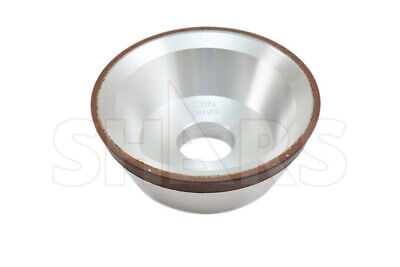- Joined
- Nov 14, 2016
- Messages
- 2,995
CBN wheels don't need the guards since they are solid, the Woodturners site shows this with their Megasquare wheels which are too big to fit inside the standard guards. As far as mounting them on a 6" grinder, no idea if that is a good idea or not, but you can buy 1/2hp 8" grinders, so not sure why mounting 8" wheels on a 1/2 hp 6" grinder would be a problem other than clearance. You would probably have to put the grinder on a short pedestal to provide clearance for the wheels though. The stock tool rests are mediocre to begin with, and rebuilding the grinder gives you an excuse to buy or make something better.
If it were me I'd probably just get an 8" grinder and find a new job for the Dewalt, but in your situation that probably means having to find a new home for the old grinder.
Would something like this work for you? It is based on a 6" bench grinder so shouldn't take up a lot more space. It seems like most belt sanders unless built ground up for sharpening need some modification, but this one and similar have been discussed before.
2x27 belt sander / disk sander
There are similar bolt on units that replace a grinding wheel with a belt.
2x36 belt sander attachment
If it were me I'd probably just get an 8" grinder and find a new job for the Dewalt, but in your situation that probably means having to find a new home for the old grinder.
Would something like this work for you? It is based on a 6" bench grinder so shouldn't take up a lot more space. It seems like most belt sanders unless built ground up for sharpening need some modification, but this one and similar have been discussed before.
2x27 belt sander / disk sander
There are similar bolt on units that replace a grinding wheel with a belt.
2x36 belt sander attachment


